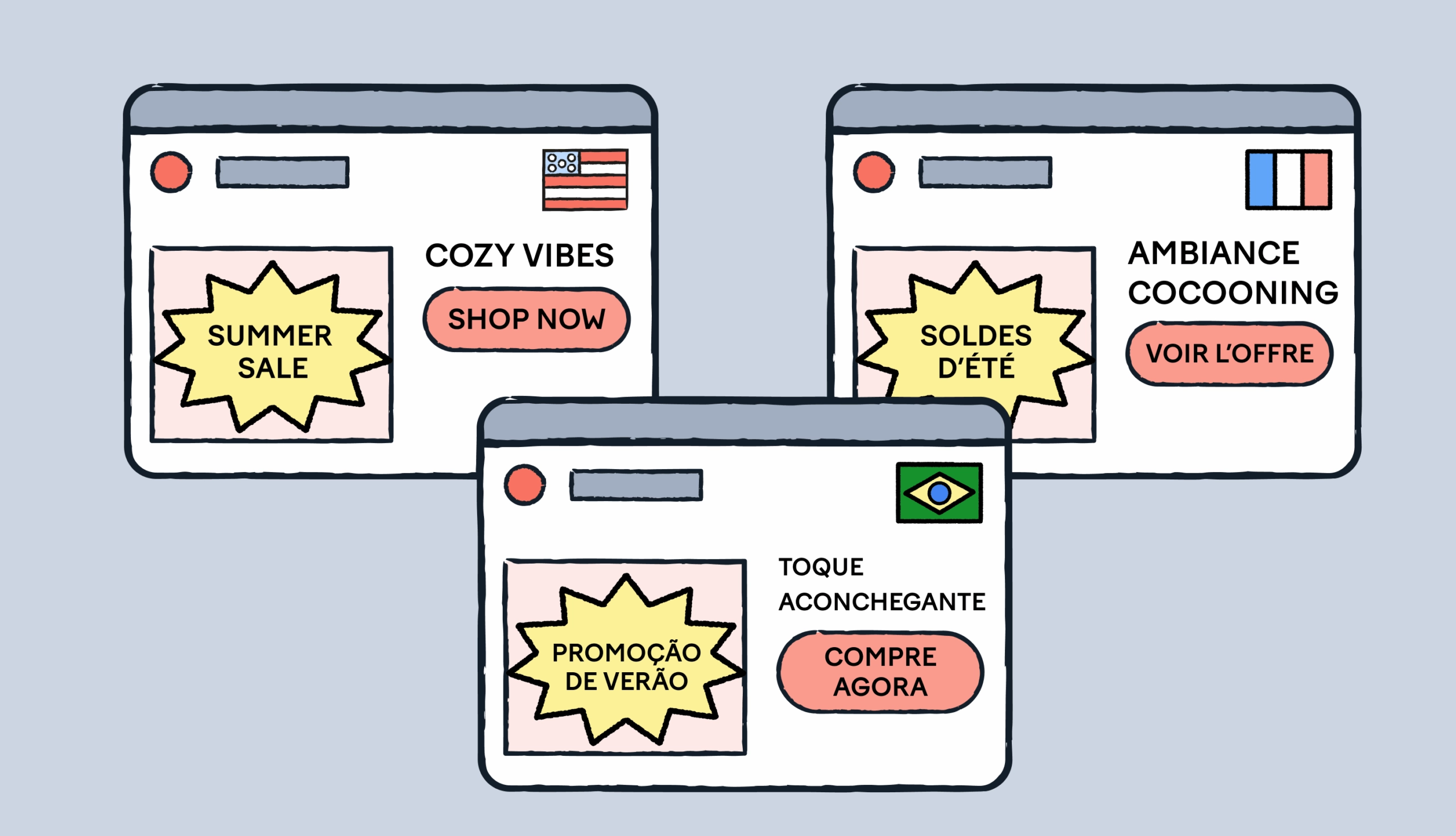What do the most successful fintech companies have in common?
- They align localization to wider business goals.
- They have C-level decision makers who understand the value of localization when it comes to international growth.
When localization is a priority – they win.
It should be no surprise, then, that nearly every single top finance app is available in more than one language. In fact, 80% of the top 20 are at least bilingual, while 35% support more than 10 languages.
But accelerating revenue through international growth comes with challenges. It requires making smart investments, being intentional about processes, and adapting technologies to keep up with the pace of change.
By implementing effective software internationalization practices, fintech companies can streamline the localization process, ensuring their products meet the diverse needs of global markets while maximizing efficiency.
What’s this ebook about?
The link between language availability and success in fintech is clear, but our extensive research on localization in fintech showed that many companies moving into new markets without a clear overview of localization face challenges in four main areas: compliance, quality, scalability, and accessibility.
So, how do you get there? How do you deliver great localized experiences and build trust with your global customers?
At Lokalise, we consulted 30+ experts to better understand localization challenges in fintech and summarize the best practices for overcoming them. We want to share this knowledge with you.
In this ebook, you’ll hear from practitioners at Google, Crypto.com, TransferGo, Remitly, Revolut, and more.
Not only will you get to see how Lokalise can help you overcome key localization challenges, but you’ll walk away with insights from experts on the front line.
You can download the ebook here.
Interested in an executive summary? Continue reading.
What’s included in the ebook?
1. Knowing the regulatory differences between countries and maintaining compliance with localization
As a financial services company operating in one of the most heavily regulated industries, you’re well aware that complying with laws and managing financial risk is paramount. Any business that involves the transfer of money, especially across international borders, requires careful monitoring and control.
The challenge of knowing and complying with regulations in different countries is something that came up frequently in our conversations with experts.
Michael Reid, Nimdzi Researcher and Assistant Editor at MultiLingual Media, underlines the importance of extensive research to prevent failures:
“In addition to the well-known issues around currency conversion, tax withholding, and money notation, one of the biggest challenges in fintech localization is regulatory structures. For example, in some regions you can’t say you’re ‘sending money’ but that you’re sending a ‘payment’ to another individual."
Michael also shared an interesting example:
"In Mexico, you can’t call yourself a ‘banco’ or have any form of the word in your name unless you’re one of the 50 licensed banks operating in the country. So, doing really thorough research on the regulatory structure of the region you’re expanding into is extremely important.”
Some key takeaways:
- Localization is not just a matter of improving customer experience, but a crucial element to ensuring that the company is compliant.
- Lean on third parties with proven success in helping fintech companies with global expansions. Invest more in compliance and take advantage of startup accelerators, mentorship programs, and LSPs that will help you along the way.
Download the ebook to learn how to control compliance with localization.
2. Finding language service providers with industry knowledge
One major fintech localization challenge we have mapped is finding LSPs that have sufficient industry knowledge. Translating industry jargon into foreign languages requires niche expertise because it is essentially about delivering regulated content.
Based on our conversations with experts, we noticed that there are three distinctive pillars of well-localized fintech content:
- Quality
- Accuracy
- Clarity
Quality is an obvious element and perhaps universal for all types of localized content. However, accuracy and clarity are paramount when it comes to fintech. Getting lost in translation might be quite costly for fintech companies, especially when it comes to legal liability and protecting company reputation.
To get it right, you will likely rely on the expertise of an LSP to steer your localization efforts. However, effective translation management is crucial, as even when working with a language partner, “scalability issues, a lack of self-service options, and of quality translations provided by major LSPs” still persist, according to Shannon Chew, Product Manager at Remitly.
In light of this, you should think about your partnership in the medium to long term and work with an LSP that is willing and able to grow with you, according to your needs.
Some key takeaways:
- Work with an LSP that has experience with financial translations, and is willing to invest the resources to find the right people.
- Work with a localization partner that will take the time to understand your business, customers, and solution. Align on shared goals, expectations, and consistent communication. At Lokalise, we partner with LSPs to help fintech companies centralize their localization efforts and work from a single localization platform.
3. Optimizing costs while ensuring the highest level of security and an efficient QA process
Embedding security at the design phase is crucial for fintechs because it all starts with secure coding practices: localization and internationalization practices need to comply with all security standards.
Under such strict security regulations, fintech companies need to ensure that everyone participating in the localization process complies with the necessary policies. This includes the following:
- Information security management
- Human resources security
- Access control
- Encryption
- Operational security (servers, data, backups, change management, system
- monitoring and alerting, etc.)
Because it is likely that you’ll need help from external LSPs or other translation service providers, you’ll need to ensure that external partners comply, too. That includes product and project managers, developers, designers, linguists, and QA specialists.
Establishing a solid QA process is crucial for fintech localization as it ensures both the quality and accuracy of translations, as well as security compliance. Here’s what Nadim Dimechkie, Director of Copy at TransferGo, shares on the topic of QA and translation management:
“The first big challenge is the quality vs. speed dilemma. Localization tools give you the power to make wholesale changes quickly, across multiple languages.”
That means you can easily make updates when errors inevitably arise, while maintaining speed and quality. The benefit in terms of cost reductions is clear if you factor in time savings.
Some key takeaways:
- Using a TMS with machine translation can be a useful tool for optimizing localization costs when combined with human QA. But there are smarter strategies for lowering localization costs by up to 30%.
- Invest time into considering different software solutions for fintech localization. Since internationalization (i18n) is a big part of fintech localization, prioritize tools that make developers’ jobs easier.
Streamline localization for international expansion
Odds are you work for a fintech company that’s facing an increasing intensity in competition and challenges around localization.
Under such circumstances, it’s nearly impossible to execute an effective international expansion strategy when you’re not working with an external partner (be it an LSP or some other third party) or are using the tools and technology that aren’t keeping up with the pace of the industry.
With Lokalise, you can accelerate localization and empower your designers, developers, managers, and content team with collaboration, automation, and 40+ integrations.
So, what can you do next?





